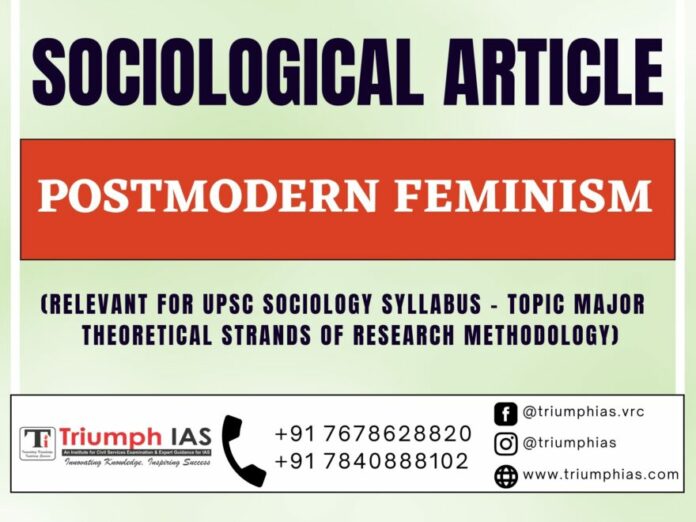Post-modern feminism epitomizes an avant-garde movement that seeks to dismantle rigid binaries and transcend traditional understandings of gender. Characterized by its multiplicity, this philosophical approach asserts that identity is fluid, shaped by myriad cultural, social, and historical influences. The primary tenets of post-modern feminism invite an in-depth exploration of how contemporary societal structures can be redefined through the lens of inclusivity, challenging heteronormativity and fixed gender categories.
As we delve into the complexities of post-modern feminism, three cornerstone topics emerge: the deconstruction of identity, the critique of power structures, and the intersectionality of marginalized voices.
Exploring the Deconstruction of Identity
Central to the post-modern feminist discourse is the notion that gender is not a static or inherent characteristic but rather a social construct subject to scrutiny and redefinition. Influential theorists like Judith Butler assert that gender is performative—an identity enacted through behaviors, language, and societal expectations rather than being a predetermined essence. This radical rethinking encourages individuals to recognize their agency in performing gender, thus democratizing identity formation.
Post-modern feminism embraces the idea of hybrid identities, positing that individuals can inhabit multiple gender realities simultaneously. This fracturing of singular identity allows for a richer understanding of what it means to be human. For example, individuals who identify as genderqueer or non-binary disrupt traditional narratives by embodying characteristics attributed to both femininity and masculinity, thereby expanding the lexicon of gender beyond binary confines. Consequently, this viewpoint also fosters an environment where less visible identities, such as intersex individuals, gain recognition and legitimacy within public discourse.
Additionally, this fluidity nurtures the exploration of gender expression. The myriad forms of self-expression that arise within this paradigm challenge preconceived notions of femininity and masculinity. For instance, fashion has emerged as a significant medium where individuals can assert their gender identities and affiliations, breaking through conventional barriers. The embrace of androgyny in contemporary fashion highlights the performative aspect of clothing and style, signaling a cultural shift that regards gender as an ever-evolving construct rather than a fixed binary.
Critiquing Power Structures
The post-modern feminist critique does not merely stop at reimagining identity; it extends to the dissection of systemic power structures that perpetuate gender inequality and discrimination. Traditional feminist movements have been instrumental in advocating for women’s rights, yet post-modern feminism nuances this discourse by interrogating the underpinnings of power that are often overlooked.
Power manifests in various forms, from government policies to corporate practices—with intersectional dimensions that compound the effects of oppression. For instance, the intersection of race, sexuality, and class demonstrates that different cohorts of women experience distinct and often compounded forms of marginalization. By interrogating these layers of power, post-modern feminism inherently calls for a more nuanced approach to advocacy that considers context, culture, and history.
Furthermore, discourse surrounding cultural hegemony becomes increasingly relevant within post-modern feminist frameworks. Feminist scholars like bell hooks emphasize the importance of culture in perpetuating systems of domination. By critically engaging with media representations of gender, race, and sexuality, post-modern feminism advocates for the recognition of how popular culture can both reflect and shape societal attitudes toward gender roles.
Discussions of feminist theory must also incorporate the examination of patriarchy within non-Western contexts, as globalization has woven a complex tapestry of interactions between diverse cultures. The push for a global feminist perspective aids in dismantling ethnocentric views that often permeate traditional feminist discourse. Such a standpoint ensures that post-modern feminism remains a truly inclusive movement, addressing power imbalances that reach beyond geographic boundaries.
Navigating Intersectionality and Marginalized Voices
Intersectionality remains a pivotal concept in post-modern feminist thought, as it posits that individuals experience oppression in multiple and often interconnected ways. Coined by Kimberlé Crenshaw, this framework calls attention to the significance of analyzing the interactions between various systems of oppression, including but not limited to racism, sexism, classism, and ableism. By acknowledging the multidimensional nature of identity, post-modern feminism advocates for the inclusion of diverse voices within feminist discourse.
The way feminism has historically prioritized the experiences and narratives of white, cisgender, middle-class women has rendered many marginalized voices invisible. Post-modern feminism challenges this exclusion by elevating the stories of individuals from diverse backgrounds, be it women of color, LGBTQ+ communities, or individuals with disabilities. This not only enriches the feminist dialogue but also provides a more holistic understanding of the varied experiences of womanhood.
Additionally, contemporary movements such as #MeToo and Black Lives Matter exemplify the potency of intersectional feminism in galvanizing collective action across diverse groups. These movements unite individuals in pursuit of justice while simultaneously exposing the unique challenges faced by different communities. Consequently, this collective activism fosters solidarity and encourages a rethinking of traditional allyship, advocating for a more inclusive intersectional approach.
The role of art and literature in expressing intersectional identities cannot be overlooked. Creative mediums provide fertile ground for narrating the complexities of personal experiences, thus contributing to a broader societal understanding of gender fluidity. Works by authors like Audre Lorde, Chimamanda Ngozi Adichie, and Rupi Kaur illuminate the struggles and triumphs of multifaceted identities, reinforcing the imperative of visibility in achieving gender equity.
Conclusion: A Future Interwoven with Equality
Post-modern feminism propels a much-needed transformation within the landscape of gender studies. By redefining traditional constructs of gender and intersecting diverse voices, it engenders an expansive dialogue around identity, power, and social justice. The intersections brought to light through this lens advocate for a society that recognizes the intricacies of human experience, devoid of rigid classifications. As society continues to evolve, the pioneering principles of post-modern feminism will remain crucial in shaping a future grounded in equality and respect for all identities.





























